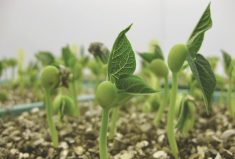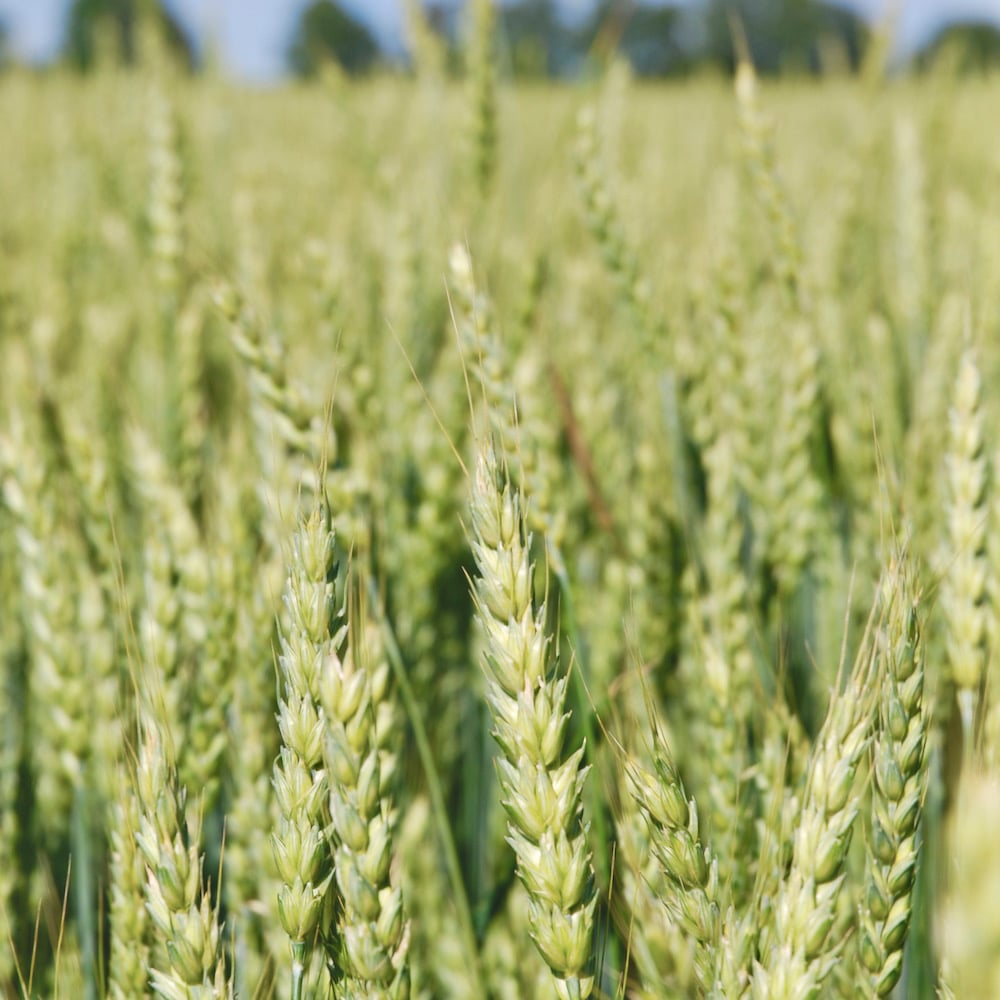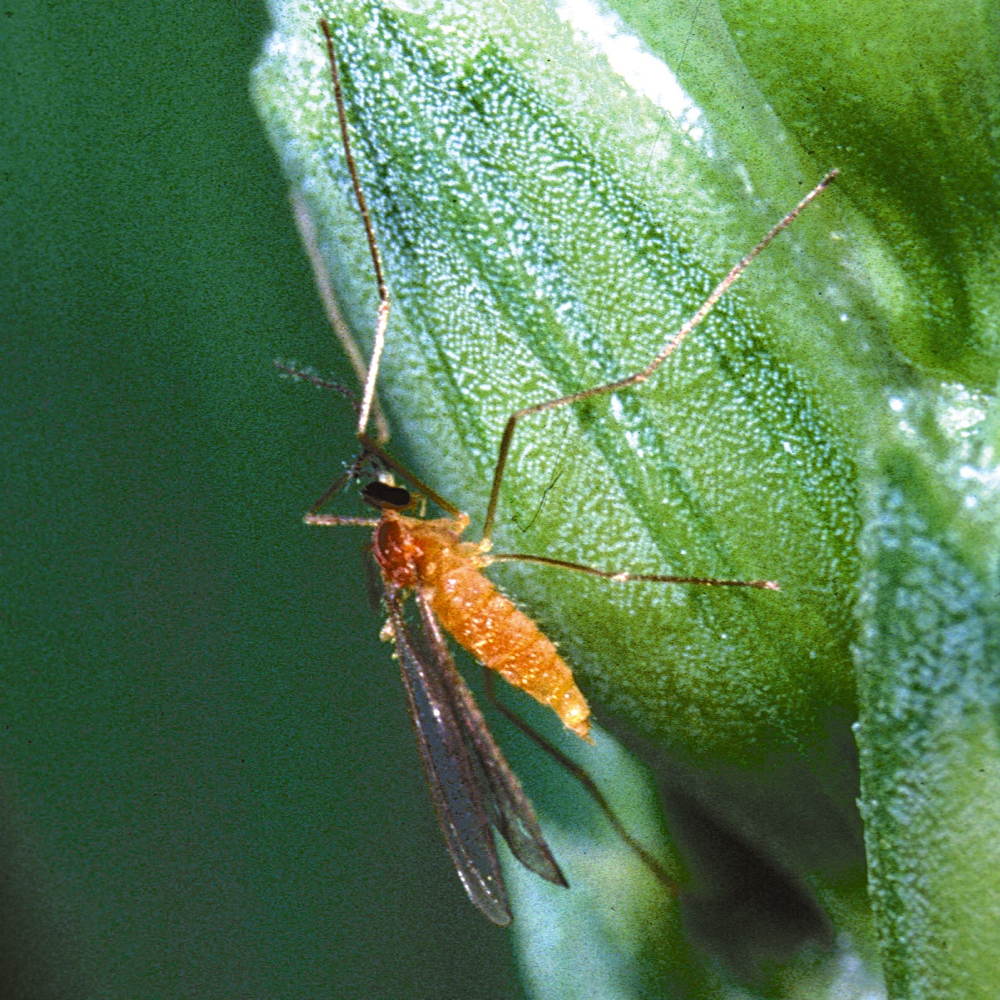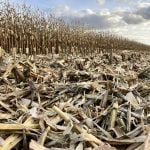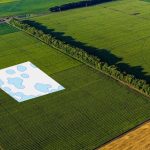The Italian pasta industry sent a ripple through Canadian agriculture a few years back when they changed the way they dry their noodles. Traditionally, pasta makers had hung the noodle for 15 hours or more at temperatures between 60 C to 70 C.
Although this produced world-class spaghetti, it also took a fair amount of time, so Italy’s pasta sector sped up the process in the 1990s when they adopted high-temperature drying at 60 C to 120 C.
The noodles were ready to go in just two to 10 hours. But there was a catch. It only worked with semolina that had the gluten strength to withstand the higher temperatures.
Read Also

Producers aren’t panicking over tariffs and trade threats
The influence of tariff and trade uncertainity on farm business decisions.
Italy is Canada’s biggest customer for Western Amber Durum, so when their protein requirements changed we responded by changing durum’s protein content. The old stalwarts such as Stewart, Hercules and Wascana were no longer up to the job, so Canadian wheat breeders went to work and developed Avonlea, Navigator and Commander.
In 2004 they released Strongfield, a variety with high gluten strength and a low cadmium uptake. Its agronomics also pleased the growers, and the Italian pasta industry was happy with the quality.
Thanks to plant breeders, Canadian farmers continued to deliver a product perfectly in tune with its market.
But it’s not an easy fix. Developing a new variety is a time-consuming and complicated business that involves rejigging a plant’s genetic makeup so that it performs the way we need it to. To do this, a breeder first takes a long look at what we demand of that plant from the time it germinates to the time it’s swallowed by a satisfied diner.
“It’s all about goal setting,” says Agriculture and Agri-Food Canada wheat breeder Ron DePauw. “That revolves around gathering intelligence from the entire value chain, the producers, the consumers, the pathologists, the entomologists… and all of that information has to feed into what is the ideal plant for meeting the requirements of that value chain.”
Even then, it’s a tricky job to get one plant to satisfy so many different players. First the new variety needs to make the cut with farmers. The ideal plant must grow quickly over the summer and be ready for the combine before the first frost. It needs to be thrifty with nutrients, too, and resistant to lodging. It also should compete with weeds and cope with disease and insects, producing a profitable yield.
Next it must please the processor. The key here is that this year’s crop should go through the mill, the press, the bakery or the factory the same way it did last year, with a minimum of recalibration. Most important, what moves from there to the grocery store has to cook, feel and taste exactly as it always has, even though it came from a new strain of plant. If the consumer won’t eat the product, it’s right back to square one.
There’s nothing new about this. Today’s plant breeder follows in the footsteps of the very first farmers who learned that productive offspring rise from two productive parents. As the yield and quality increased, the early farmers started trading their surplus seeds, which means the selection and breeding continued on a larger and larger scale.

Thousands of years later, pioneers like Henry Wallace and George Harrison Shull took plant breeding to the next level and began developing the high-power hybrids that farmers use today. Crop breeding moved out of the field and onto the research plot where we apply modern techniques to develop the next generation of seed.
“You still cross the best with the best and you hope for the best,” laughs University of Manitoba senior scholar Peter McVetty. “But now you need a sterile lab facility with the artificial ability to grow cells and you also need the ability to isolate DNA, clone it and purify it.”
Today’s breeder starts by drawing up an ideotype, the ideal form of what you’re developing. This ideal plant should satisfy all demands put on it by all the players in the value chain. Once that’s established, a breeder looks at different genetic lines and decides what may go together to produce the ideotype. The trick is to find or develop two parents whose genes will come together and complement each other.
“In terms of a hybrid crop you have to develop the parental lines,” McVetty says. “There are two parents used for every hybrid, and you need separate parental line development streams, one for the female stream and one for the male. It’s a continual process — you’re always developing new female lines and new male lines with all the desirable traits and then crossing those to see what hybrid progeny they produce.”
This gives us the first crossed generation, which breeders refer to as F1. If the mature plant fits the requirements of the ideotype, then we move onto the next step, the evaluation and assessment.
“And when you’re doing that assessment, you’re looking at whether or not it’s suitable for release,” DePauw says. “If it’s not, then you have to go into this whole cycle of hybridization, evaluation and selection, and I would say that’s the loop where the vast majority of breeding effort sits.”
The F1 generation is bred to the next or F2 generation. Wheat self-pollinates but that doesn’t mean that it’s cloning itself. There’s still variation within all that pollen and seed and it expresses itself in the F2 generation.
This leads to the fundamental problem that breeders have with genes — they don’t stay put. Organisms like to shuffle them around so that subsequent generations are made of different gene combinations. This makes sense in a wild ecosystem, where an environmental change may favour one combination over another so the more suitable type will survive and pass on its genes.
In agriculture we’re not interested in variability. We like uniformity, and one truckload of durum from Midale, Sask. had better be like another truckload from Pipestone, Man. That Italian factory wants consistency. Domestic plants may be tightly bred to produce uniform offspring but early in the breeding cycle their wild heritage will out. The next generation or F2 is where the fun begins.
‘That’s the generation at which you have the greatest variation and you start practising selection,” DePauw says. “Every plant in that group will be different.”
DePauw knows that the F2 generation will be highly variable, but if he plants enough of them, there’s a very good probability that he’ll find something in there that he can use. Since his sample size is related exponentially to the variability, his sample population gets pretty big pretty fast. In order to find “The One,” he has to sort through thousands of plants every year, which requires an eye for detail, tremendous focus and a good nursery.
“You’ve got to have super good nurseries as well as top-notch technical support to run a good nursery,” DePauw says. “If you don’t run a good nursery, you’re not going to find the genes.”
These nurseries serve another important purpose. They act as an agronomic “sieve” where breeders subject their developing varieties to the hazards of the commercial farm field. This is where they’re subjected to diseases and insects, with DePauw selecting the best survivors.
They’re the ones that jump the next hurdle and contribute their genes to the next generation. All the while that same hybridization, evaluation and selection keeps going until the plant breeds true and the progeny are uniform. This usually takes until the F6 or F7 generation. As soon as they have a “meritorious” generation they can prepare it for commercial release.
Plant breeders sometimes lament the fact that 99 per cent of their cultivars will never end up in a commercial field. On the other hand, when they win, they win big. Canadian agriculture has quite the list of successes such as sawfly-resistant Rescue wheat and Strongfield durum.
Breeding is a cat-and-mouse game. When a new industrial process demands different protein content, the genetics must be adjusted. When a new strain of rust appears on the horizon, the genetic resistance must be found or production may fall. The changing face of agriculture and the new curveballs that both Nature and industry throw at us will keep plant breeders busy for as long as we’re growing crops.



